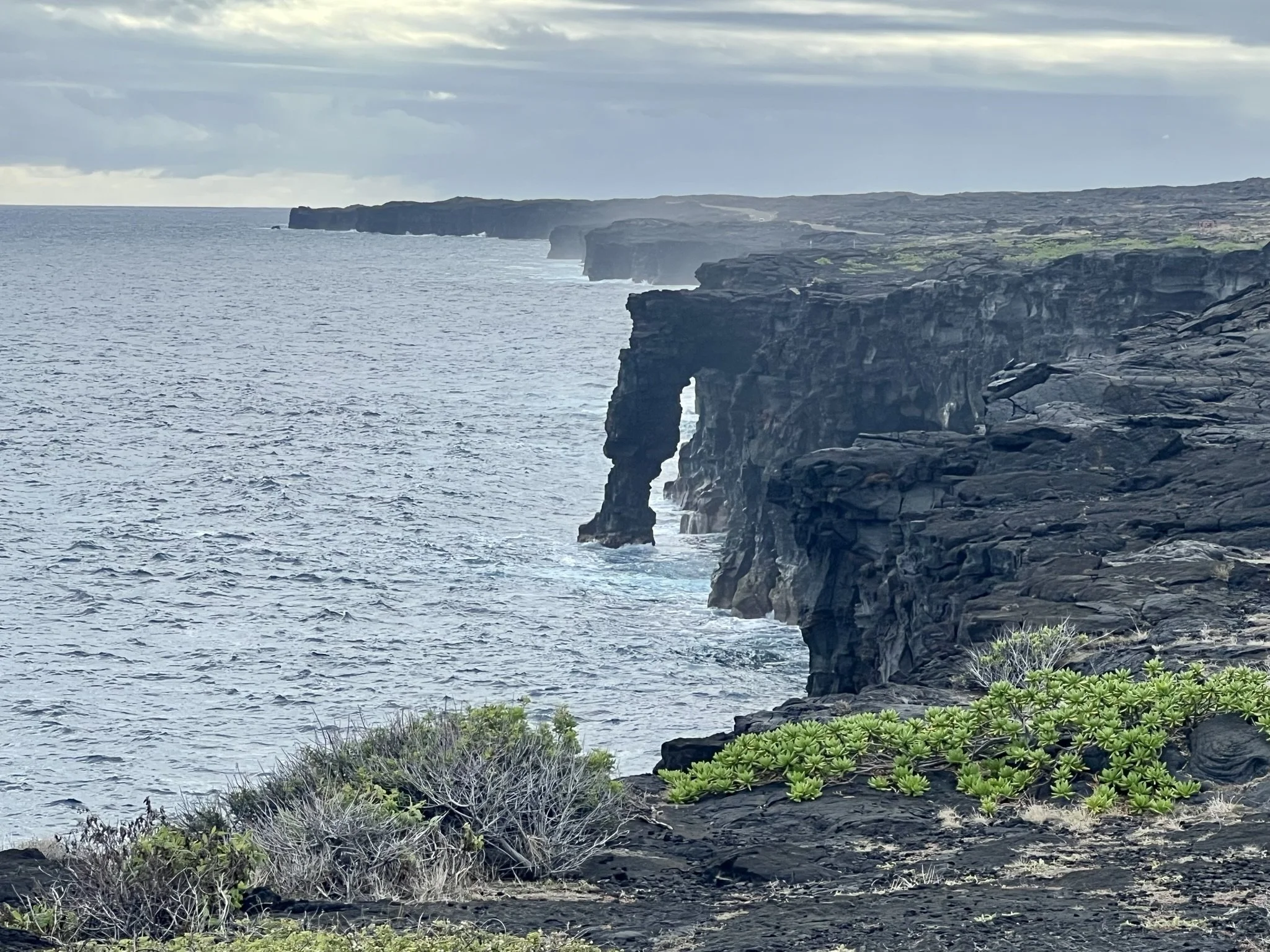Hawaii Volcanoes National Park: How to View and What Not to Miss
Hōlei Sea Arch at the end of Chain of Craters Road
Hawaii Volcanoes National Park, located on the Big Island of Hawaii, is one of the most breathtaking and geologically active destinations in the world. Home to Kīlauea and Mauna Loa, two of Earth’s most powerful volcanoes, this park offers an awe-inspiring mix of lava flows, craters, lush rain forests, and surreal volcanic landscapes. Whether you're looking to witness an active eruption, hike across ancient lava fields, or explore steaming vents and lava tubes, this park is an adventure unlike any other.
With its 24/7 accessibility, a visit to Hawai'i Volcanoes National Park can be as thrilling as a daytime road trip through its diverse terrain or as magical as a nighttime hike under the glow of molten lava and the Milky Way. This is one of our absolute favorite parks to explore because of its uniqueness and beauty. Also the ability to see lava flowing is such a cool experience to witness. Another great thing about the park is it’s a dark sky designated area, making viewing the milky way unforgettable! In this guide, we'll cover everything you need to know about viewing opportunities, hiking trails, guided tours, and must-see spots to help you make the most of your visit.
If you are looking for other epic things to do while visiting, check out our ultimate guide on the Big Island of Hawaii!
Tips Before You Go:
How much time is needed for the park: Two full days is ideal for seeing everything the park has to offer. If you only have one day to visit, allow a full 6-8 hrs here to check out the sites on Crater Rim drive and to take the Chain Craters Road down to the ocean stopping at the view points, lava tube, and a hike or two along the way.
What to Wear: Comfortable, breathable clothing and good hiking shoes are a must. Pack layers - it can be cool and misty at the top and sunny and warm at the the bottom of the park, or the entire park can be super hot. Weather can be hard to predict so check the weather the night before or morning of. If staying after dark, it’s a good idea to bring a light jacket or sweater.
Be sure to stop by the visitor center when you arrive. The park rangers were great and helped us map out our initial visit to the park & how to maximize our time there. The national park is open 24 hours a day & year-round, but the Kilauea Visitor Center and Park Store are open daily from 9:00 a.m. to 5:00 p.m. If you don’t have time to stop by the visitor center or you need more information ahead of time, you can check for updates regarding lava flow and any road closure directly on the park’s homepage.
We recommend downloading the NPS App from the Apple Store which will give you up to date information about the park and current conditions.
Where to Stay:
If you plan on doing multiple days at the park or staying after dark to witness the lava glow with the milky way, consider staying in or near the park to avoid the long late-night drive back to your accommodation. If cutting back through the island to the Kailua-Kona side after dark, ensure you have lots of snacks and caffeine to make it back to your accommodation. The distance is 2 hrs from the exit of the park to Kailua-Kona and road is extremely dark — we found it a struggle to stay awake after a long day. If you do drive back at night, take care while driving and look out for goats on the road.
Volcano House: Located inside of Hawai’i Volcanoes National Park, this is a historic retreat with wonderful views into Halema’uma’u Crater. To secure a spot at Volcano House on the national park, especially during peak season or with the potential for eruptions, book at least 6 months to a year in advance as it's a highly sought after accommodation. If erupting, you can see lava flow from the back of the Volcano House without even leaving the hotel or campsite; however, don't wait for an eruption to book your spot here! They are typically completely booked a full 2 months out.
Kilauea Lodge and Restaurant: Beautiful lodge with lots of charm. Great location close to the park entrance with a nature trail in the close proximity. Offers wonderful dining, a hot tub, and in room fireplaces to unwind after a long day of hiking at the park.
Volcano Village Estates: Lovely cottage nestled in the forest offering a fireplace and mini fridge in each room and hot tubs to relax. Only a few minutes drive from the entrance of the national park.
Food Options
The Rim: Located in the Volcano House hotel in the park near the Kilauea Visitor Center & serves local seafood, steak pasta, and also more casual items like burgers and pizza. Great views into the caldera!
Tuk Tuk Thai Food: Delicious Thai food - we stop here for an early lunch every time we head to the park! Noodle dishes, stir-fries, and curries with huge portions. Pop open your trunk and feast off the back of your vehicle. Located just a few minute drive from the visitor center. The turn comes up quickly onto an unmarked gravel road. Google Maps will get you there, just drive slowly so you don’t miss your turn. Tip: When on the gravel road to the food truck, you’ll pass a little shop which has great locally made products. Nice store to pop in while you wait for your food to be made!
Kilauea General Store: Grab some food and drinks to picnic later in the park! They have freshly made subs to go and also have a little coffee shop area if you need a pick me up for the day if starting early.
Ways to Experience Hawaii Volcanoes National Park
Driving Through the National Park
The easiest way to view the park is by renting a car. The park is wonderfully designed with several main roads conveniently leading you to top viewpoints, into craters, and amazing spots to see geothermal activity from steam vents to lava flows. You will quickly go from dry landscapes to lush rain forests while driving the park. The change in scenery in this park left us in awe. We found driving and parking to be fairly easy, although going during peak times of the day can have some small traffic delays. Overall the roads have plenty of places to pull off to stop at viewpoints and hikes.
If you need help mapping your adventure, check out the NPS app to follow or download self-guided driving routes through the park. We also recommend flagging the top sites you’d like to see during your visit on Google Maps and then downloading an offline map of the local area so you have this in areas with no cell service.
Hiking
While the viewpoints are amazing from the road, hiking allows you to get up closer to the action. You can stand next to steam vents, walk through lava tubes and fields, check out ancient petroglyphs, get close to lava flows, and experience the night time lava glow while enjoying the night sky and milky way. Hiking the trails helps you truly understand just how large this gem of a national Park actually is and the incredible size of the craters.
Guided Tours
Another alternative to driving the park yourself is to take one of the great guided tours that lets you sit back and enjoy the views. If you’d like some more in depth history and information while visiting, you can book a customized private tour with geologists, volcanologists, and retired park rangers to name a few.
Companies like Friends of Hawai’i National Park can create a tour for you based on interests and skill level, half day, full day, or multi-day tours. They also do photo tours to document your incredible experience in the park.
There are also small guided group hikes that you can book to learn about volcanoes, geology, botany, and the history of Volcanoes National Park.
If you are short on time while visiting Hawai’i, you can also opt for a tour to include the national park, Rainbow Falls, and the famous black sand beach with sea turtle opportunities here!
Helicopter Viewing
Experience some of Hawai’i Volcanoes most remote and inaccessible locations by air! This offers incredible viewing opportunities of the Kilauea caldera, volcanic cones, the lush rain forests and waterfalls, and a wonderful view of the lava flow if visiting while erupting!
Here are some helicopter tours to check out, but they can book up fast:
Top Viewpoints:
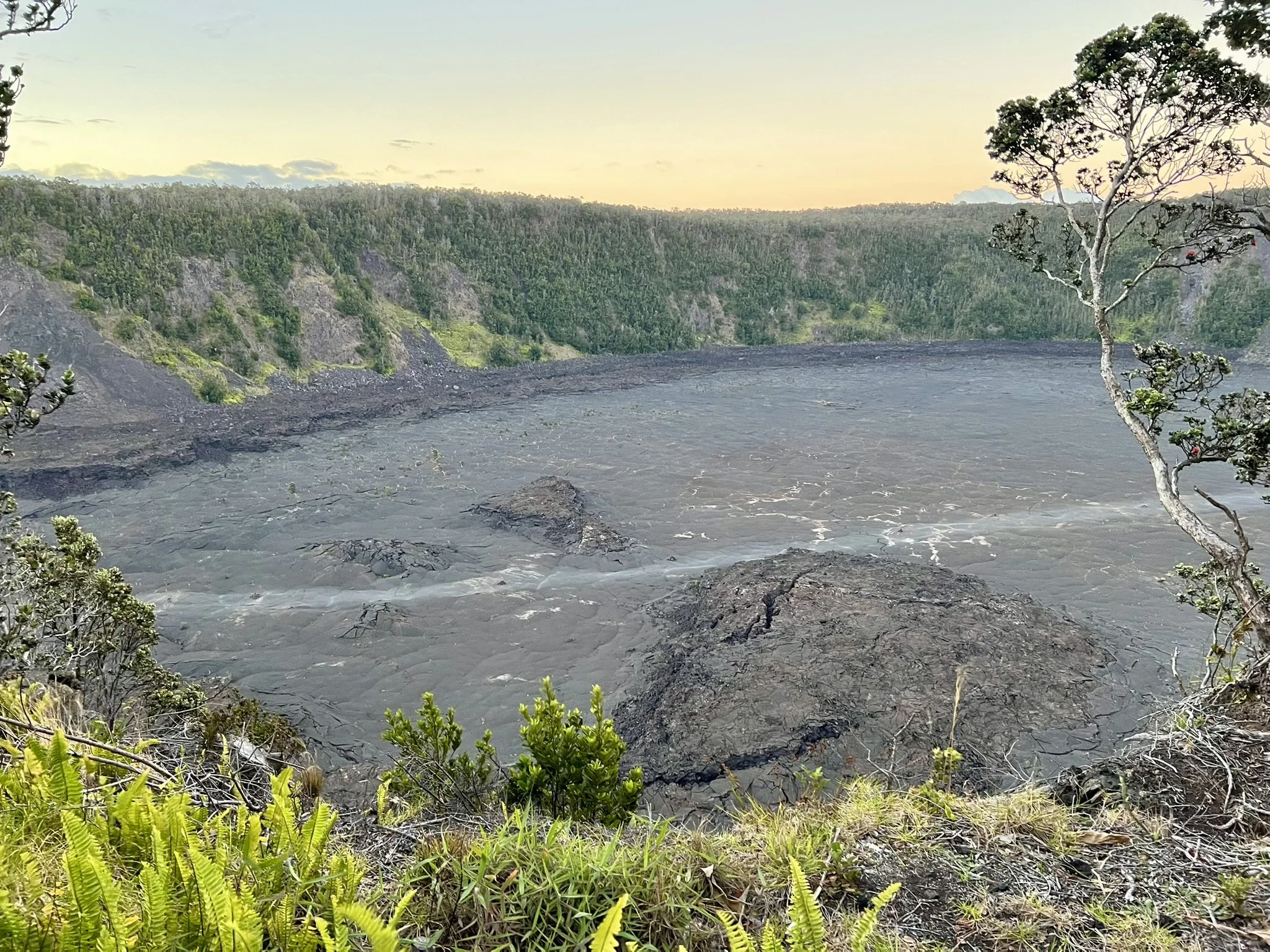


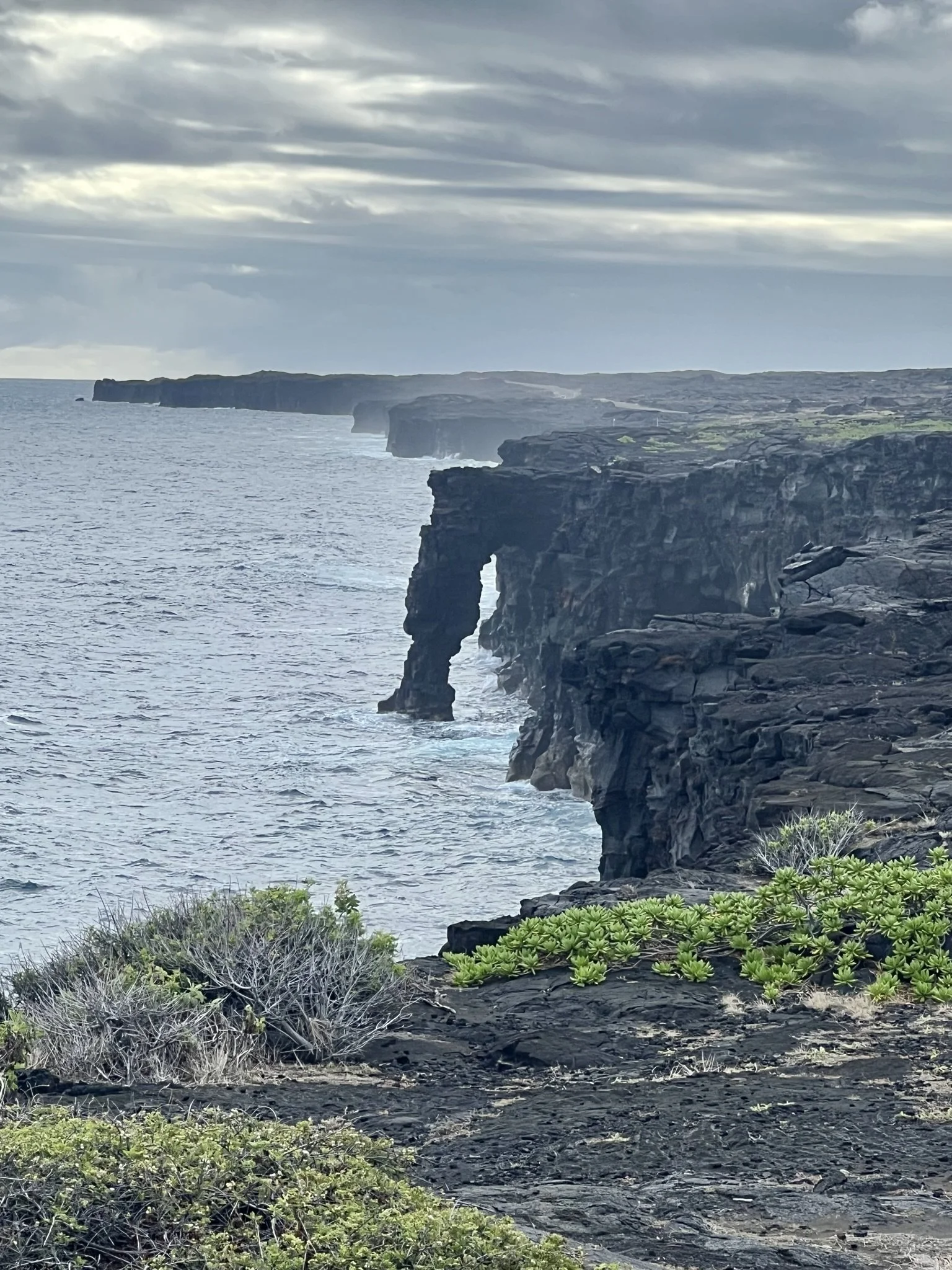




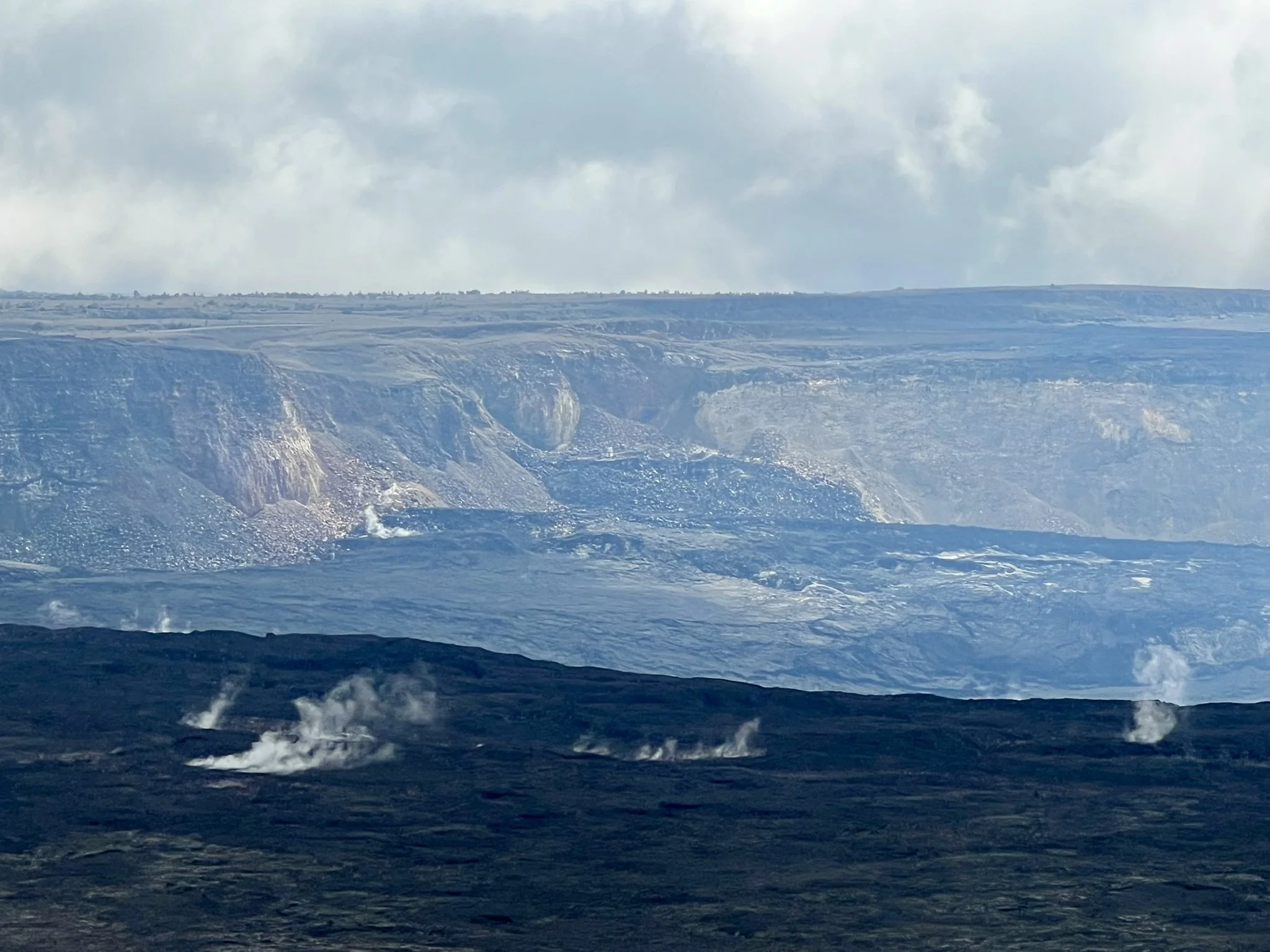
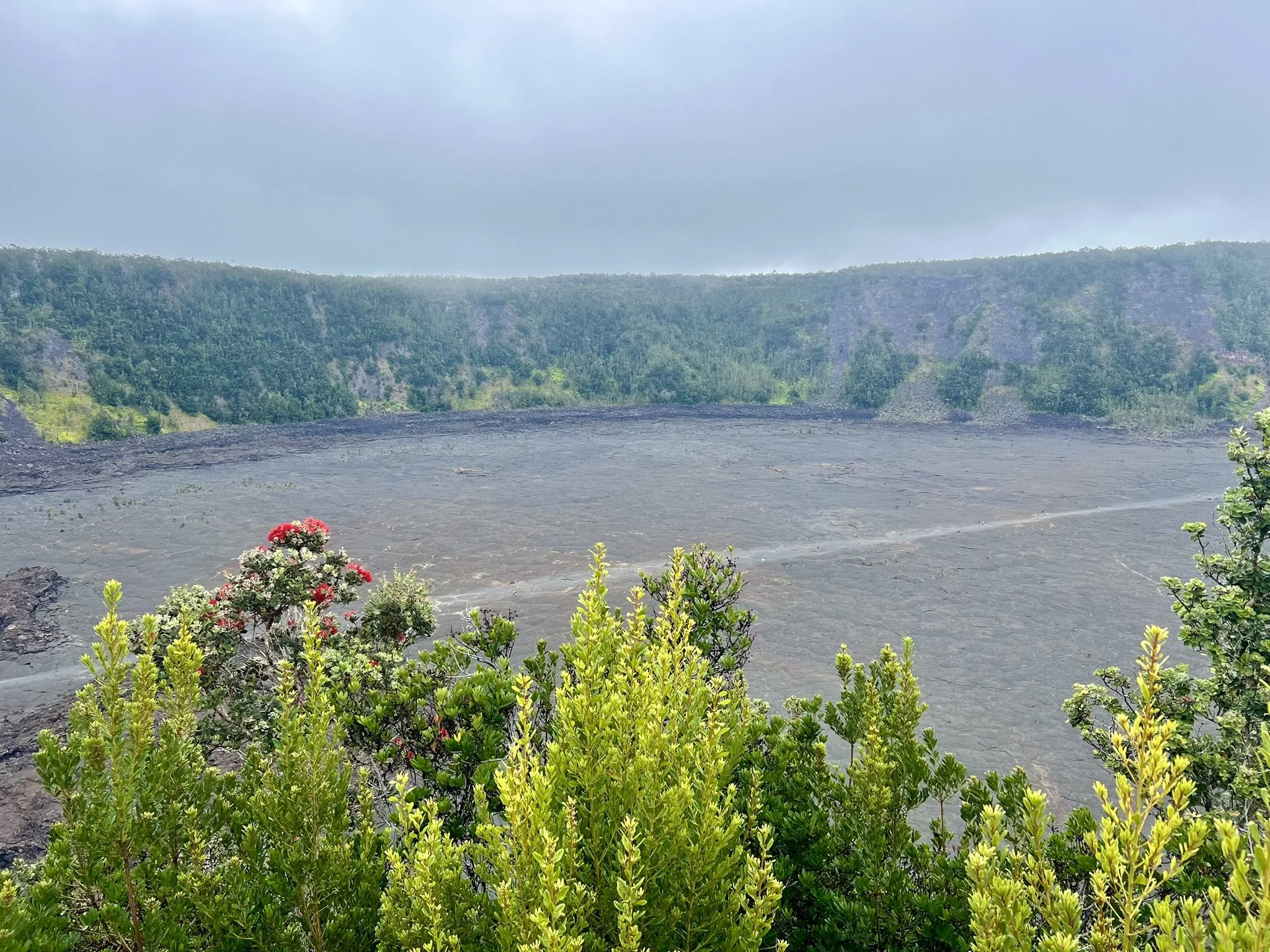
🌋 Kīlauea Overlook: This stop offers sweeping crater views at the top of the park. This is just a quick drive from the visitor center. The size of the crater is truly impressive that it will leave you in awe. There is a short hiking trail that you can take up to the next parking lot (or you can simply drive to the next stop) called Kau Desert Trail. Walking this will give you an even better understanding of how massive this volcano really is. The trail continues for awhile but you can go as far or as little as you’d like. At night there are small foot lamps that illuminate the path - great to witness if Kilauea is erupting to see the lava glow.
Steam Vents (yes, this is the name of the viewpoint!): Check out geothermal activity up close! You will be standing close to the steam and feel the heat coming from the ground. This is a nice short stop to feel that the volcano is very much alive.
Chain of Craters Road: The road from top to bottom is 18.8 miles with restrooms at the Maunaulu Parking area. This drive is a big attraction highlighting the lava flows, unique formations, and view points with the lava meeting the Pacific Ocean. Be aware, this road can shut down due to seismic activity so be sure to check alerts here before you go.
Muliwai a Pele: translating to “river of lava”, provides a view of the Maunaulu lava flows that crossed the road from 1969 to 1974. You can see the amazing lava flow formations from this view point. Definitely worth a couple minute pit stop on the way down. This is at the top of the Chain of Craters road before the first left-hand curve.
Kilauea Iki Overlook offers wonderful views of the Kilauea Crater from the parking lot. If you’re looking for a spectacular area to view the sunrise in the park, this is a a great choice!
More than halfway down the road, we recommend checking out the Kealakomo Overlook. This view point offers panoramic views of the Pacific Ocean and the massive lava field which extended the island of Hawai’i into the ocean.
Towards the bottom of the road, stop at Pu'u Loa Petroglyphs to see some ancient carvings in the lava rocks and stop at some different pull offs for hiking to simply take in the views of the Pacific. From the view points looking out into the ocean, you can start to get an idea of the sheer size of these eruptions over the years and how the lava flows are expanding the size of Hawai’i year after year.
Take the Chain of Craters scenic drive down all the way to the bottom to find the Hōlei Sea Arch. This amazing icon was formed by erosion from the sea around 550 years ago. You will park along the road and the walk is only 0.4 miles total out and back to have views of the sea arch.
🌋 Mauna Loa Lookout: Check out this lesser-visited area of Hawa’ii Volcanoes National Park. Mauna Loa is a peaceful escape with stunning scenery. where you'll get panoramic vistas of the Big Island’s rugged lava fields and lush forests.
Drive along Mauna Loa Road for breathtaking views of the world's largest volcano by volume. Mauna Loa Road is a scenic yet a winding climb through diverse landscapes. The narrow, 11-mile (17.7 km) road starts from Mamalahoa Highway (Highway 11) near the Volcanoes National Park and ascends steadily old lava fields, high-elevation forests, and stark volcanic terrain.
Road Conditions to Mauna Loa: The road is paved but narrow, with some rough patches and occasional fog at higher elevations. Drive carefully, as there are no guardrails in some sections. It’s a peaceful drive with minimal traffic, making it a great off-the-beaten-path experience. The drive does take a solid 40+ minutes from the Kailua Visitor Center.
Elevation Gain: The road climbs to 6,662 feet (2,031 meters) to the Mauna Loa Lookout, offering stunning panoramic views of the Big Island. On a clear day you can see the Pacific Ocean.
Weather: Conditions can change quickly, with cooler temperatures, strong winds, and mist common as you ascend.
Kipuka Pualu Trail (on the way to Mauna Loa): This is a great place to pull off for a picnic and enjoy the easy 1.2 mile loop to see older vegetation surrounded by a more recent lava flow.
Recommended Hiking Trails:
Sulphur Banks: Quick 10 minute scenic stroll from the Kilauea Visitor Center. The path is a paved path that becomes a boardwalk and is wheelchair accessible. You will see volcanic gases and steam rising up around you from the ground.
Thurston Lava Tube: This is one of our favorite stops in the park and we love going back. You’ll park in an open lot and cross the street where you’ll find signage about the lava tube. You’ll be able to read about how the lava drained from the tunnel after the eruption and you’ll follow the trail to and through the lava tube. The trail is a loop that will drop you off back to the parking lot. The size of the tunnel is shockingly large and we love marveling at the greatness of nature. If the parking is full, be patient and wait for people to finish up as this is a pretty quick stop with cars coming and going frequently. You can also carefully loop around further down the road if need be or hit up this stop on the way back. DO NOT park along the side of the trail where it states No Parking. I have seen people getting tickets there on two occasions.
Note: The trail is paved so it is much easier to walk through than you’d expect. I did turn on my phone’s flashlight for additional lighting but there is uplighting through the lava tube.
Devastation Trail: Otherworldly landscapes to take in during the day but also great during sunset so you can see not just the landscape of the trail and the plant-life, but also the volcano if it is erupting at night. If you’re lucky and can snag a parking spot here for the Keanakako’i Overlook to witness the lava flow at night, this is the closest parking lot for the hike. More information on the night hike under the Keanakako’i Overlook bullet point below.
Keanakako’i Overlook: When Kilauea is erupting you must put it on your bucket list to see at night! You can check the national park website for information on this. Head to the Pu’Upua’I Parking Lot by 5:30 or 6pm at the very latest during the summer or earlier if going during during other seasons when sunset happens earlier. This lots fill up for the night hike quickly. You can hang out in your car for a bit like we did if you prefer to have a snack and change into some warmer clothes. Keep an eye out for the cute Nēnē, Hawaiian geese and check out the viewpoint of the Pu’Upai’I Overlook to check out the cinder cone.
For the 1.4 mile easy trail to the overlook, you’ll pass the restrooms on the way to Devastation Trail which will end onto Chain of Craters Rd and take the road for a short distance. From here you will turn onto Crater Rim Drive and take the trail until you reach Keanakako’i Overlook where you can witness the red glow of lava in the volcano and in the air. Google Maps is easy for guiding you there but you can really just follow the herd of people that are also headed to the same spot as you.
If you’re lucky and can snag a parking spot at the Devastation Trail Parking Lot to witness the lava flow at night, this is the closest parking lot for the hike. Get here before 5pm in summer or earlier if coming during shorter daylight seasons for a quicker walk to the overlook (0.9 miles each way)
Pro Tip: If you have an iPhone, set the exposure to 5 seconds and keep your phone as still as you can for some great photos of the glow with the night stars. Also try setting it to 10 seconds when it’s completely dark out (will need a steady hand - if you have a tripod, this is even better), for amazing photos with the lava and milky-way present. We used our phone’s flashlight but a headlamp or actual flashlight would have been better for the hike back to ensure you don’t trip and fall on lava rock.
Halema’uma’u Trail: 1.8 mile round trip trail taking you through a rain forest and down to the floor of Kilauea. We did a portion of this trail at night as well during an eruption and saw a nice lava glow. Park at the Kilauea Visitor Center - the hike starts across the street from here!
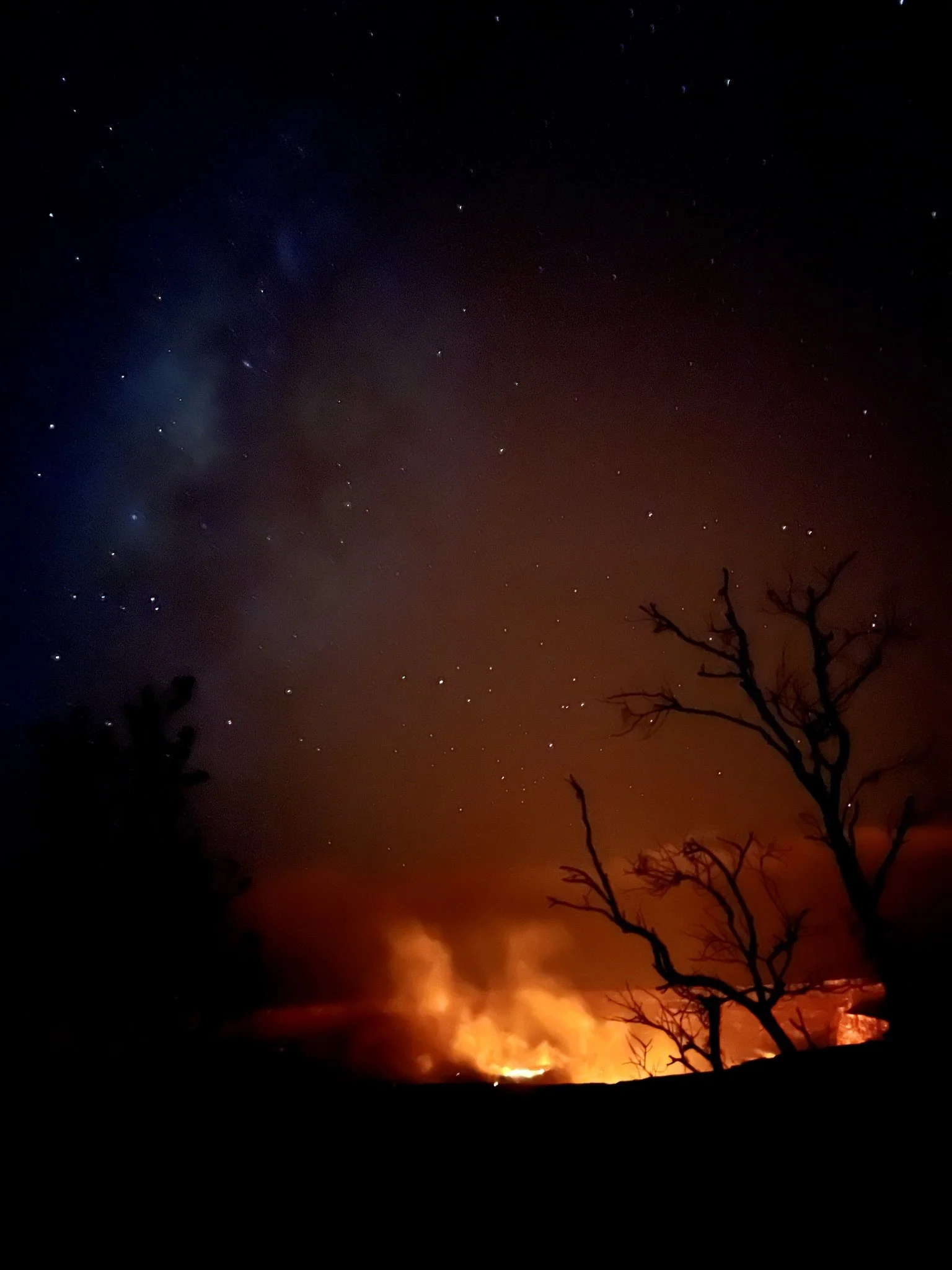


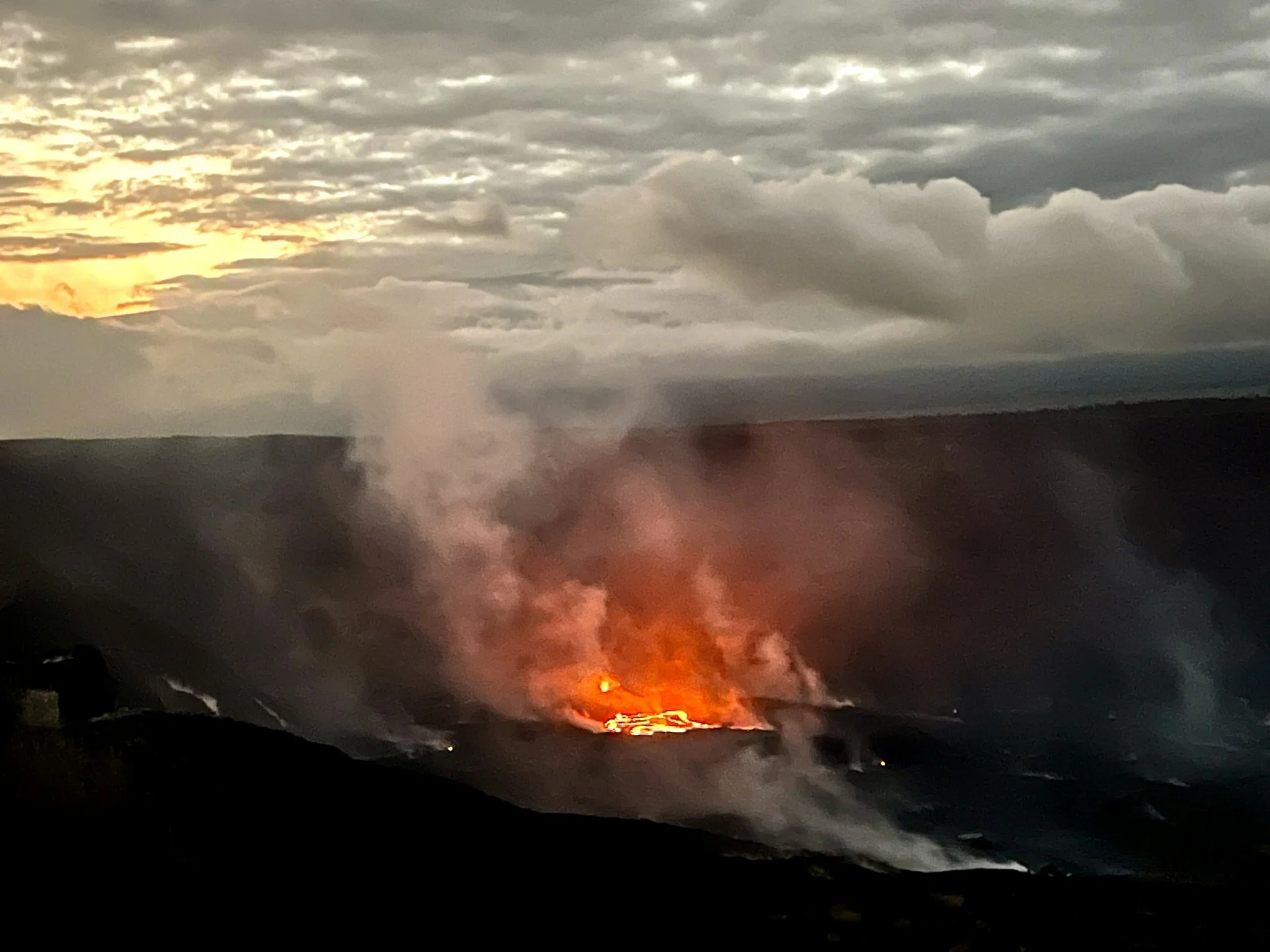

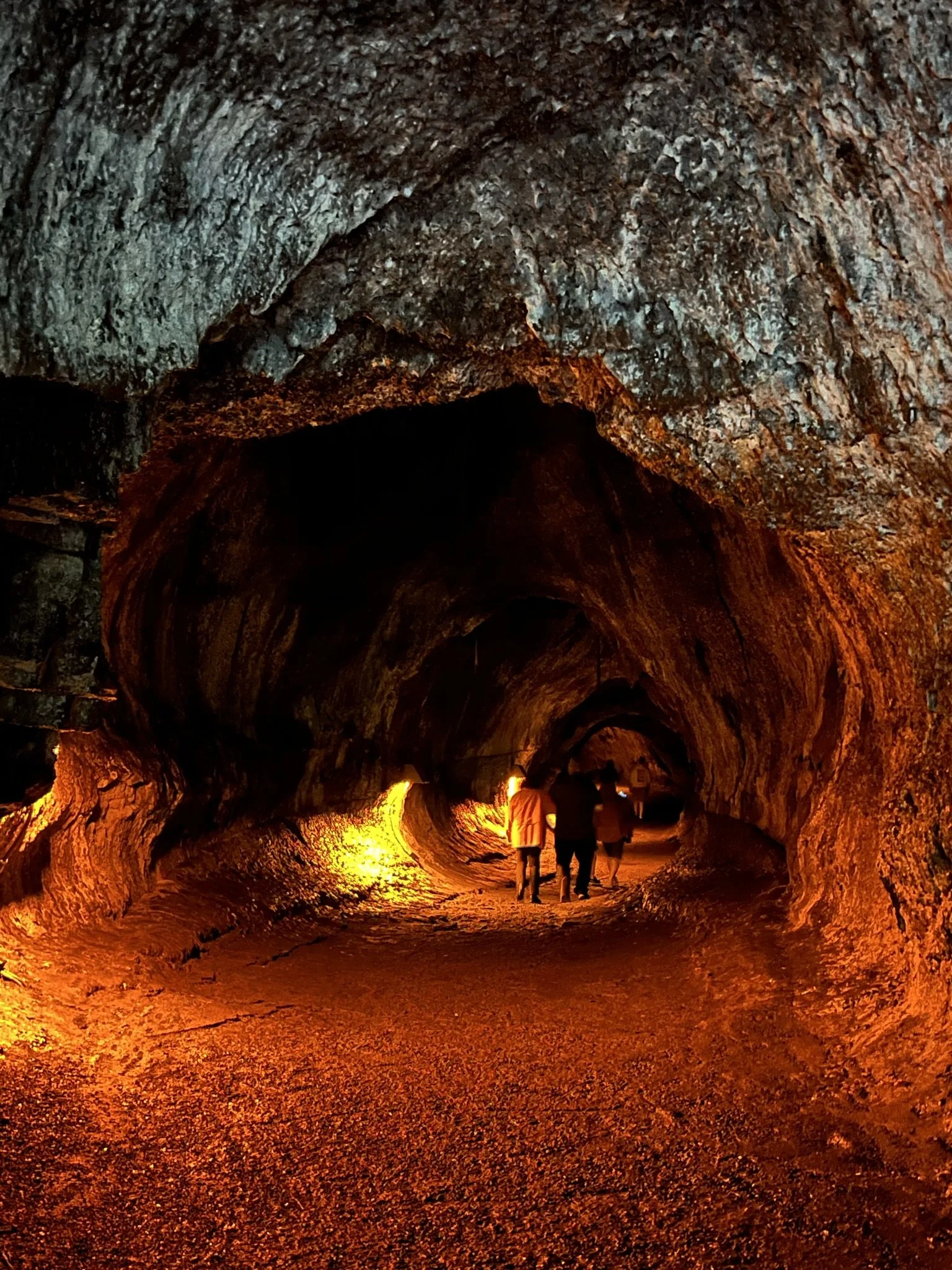

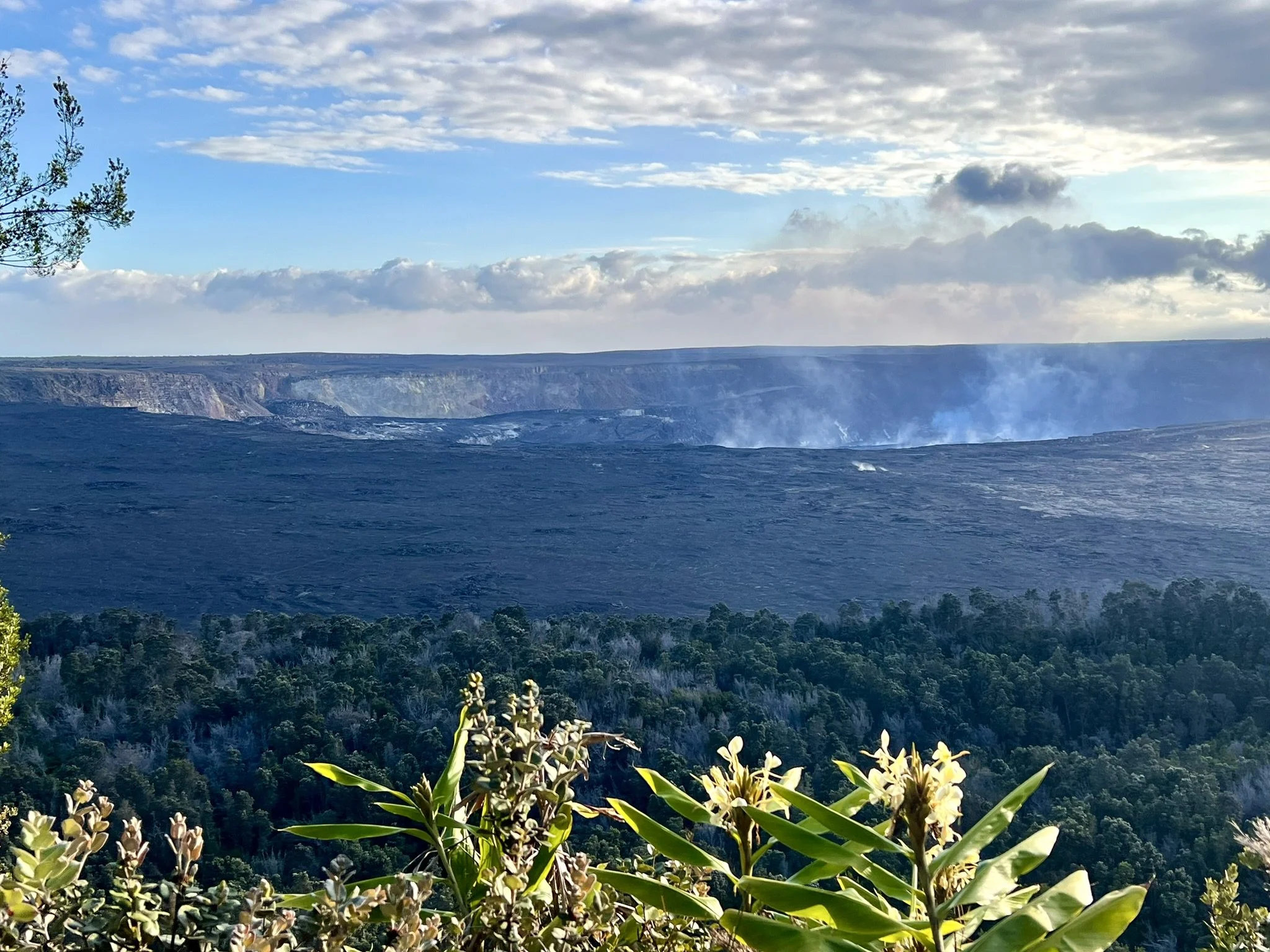



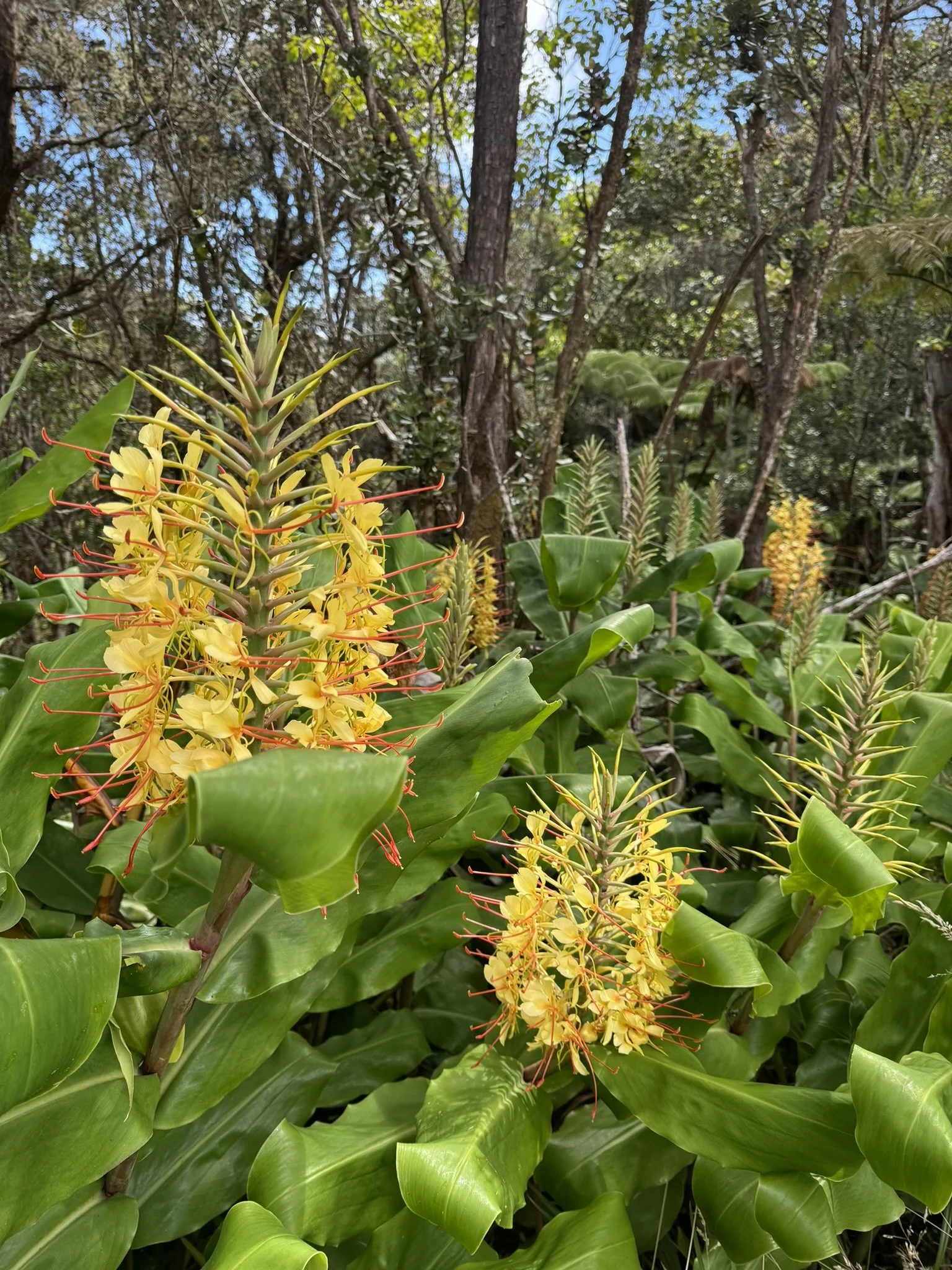
Final Thoughts
Hawai'i Volcanoes National Park is more than just a national park—it’s a living, breathing showcase of the Earth’s raw power. Whether you’re witnessing the fiery glow of an active lava lake, standing inside a massive volcanic crater, or hiking through lush rainforests, this park offers an unforgettable journey through time and nature.
For the best experience, plan ahead, check for current lava activity, and don’t rush your visit—there’s so much to see and explore! Whether you drive, hike, or even soar above the volcanoes on a helicopter tour, every moment in this park is an opportunity to witness the forces that have shaped the Hawaiian Islands for millennia.
So pack your hiking boots, camera, and a sense of adventure, and get ready to explore one of the most remarkable landscapes on the planet!
If you want to learn more about the Big Island of Hawai’i check out our full blog post!
Disclosure: This post contains affiliate links, which means we may earn a small commission (at no cost to you) if you book or purchase through our links. We only recommend things we’ve personally used and loved. Thanks for supporting our blog!
✨ Ready to plan your own Hawaii Big Island escape?
Check prices for Hawaii Hotels or browse tours around Big Island in Hawaii to get started!
